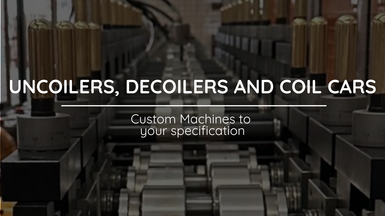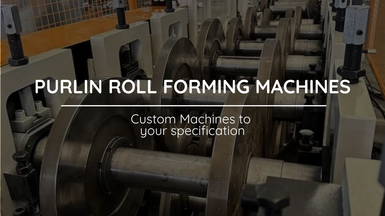
Step flashing Roll Forming machine
A step flashing roll forming machine is a specialized piece of equipment used in the construction industry to produce step flashing.
Posted on Tuesday, November 14, 2023
Step flashing Roll Forming machine Specification
The specifications of a step flashing roll forming machine can vary depending on the manufacturer and the specific requirements of the user. However, here are some common specifications and features you might find in a typical step flashing roll forming machine:
- Material Type: Step flashing roll forming machines can be designed to work with various materials, including galvanized steel, aluminum, copper, and other sheet metals. The machine's specifications should indicate the compatible material thickness and width.
- Roll Forming Speed: The roll forming speed refers to the rate at which the machine processes the material and produces step flashing components. This speed can vary, but it is typically measured in feet per minute (FPM) or meters per minute (MPM).
- Roll Forming Stations: The number of roll forming stations or forming passes determines the complexity and precision of the step flashing profile. More stations allow for more intricate shapes and dimensions.
- Control System: Modern roll forming machines are often equipped with computerized control systems that allow for easy setup, operation, and adjustment. These systems may have touch-screen interfaces and programmable logic controllers (PLCs) for precise control of the machine's functions.
- Cutting Mechanism: The machine may include a cutting system, such as hydraulic shears or flying cutoffs, to trim the step flashing components to the desired length accurately.
- Material Thickness Range: The machine's specifications should specify the minimum and maximum thickness of the material it can handle. Different materials may require adjustments to the machine settings.
- Material Width Range: The machine should be capable of accommodating a range of material widths to produce step flashing of various sizes.
- Drive System: Step flashing roll forming machines typically use a motorized drive system to move the material through the forming stations. The drive system should be reliable and capable of handling the required production speed.
- Tooling and Rollers: The machine's tooling and rollers are essential components for shaping the material into the desired step flashing profile. The quality and precision of these components are crucial for the final product's accuracy.
- Safety Features: Safety is a critical consideration for any industrial machine. Look for safety features such as emergency stop buttons, guards, and safety interlocks to protect operators and prevent accidents.
- Dimensions and Weight: The physical dimensions and weight of the machine are important to ensure it can fit within your manufacturing facility and be transported as needed.
- Power Requirements: The machine's power requirements, including voltage and phase, should match the electrical supply in your facility.
Keep in mind that the specific specifications of a step flashing roll forming machine can vary from one manufacturer to another. It's essential to communicate your exact requirements and consult with machine manufacturers or suppliers to ensure you get a machine that meets your production needs and budget. Additionally, always follow safety guidelines and maintenance recommendations provided by the manufacturer to ensure the safe and efficient operation of the machine.
Step flashing machine Description
A step flashing roll forming machine is a specialized piece of equipment used in the construction industry to produce step flashing. Step flashing is a critical component in roofing and siding installations, particularly around areas where roofs intersect with walls or chimneys. It helps prevent water from infiltrating these vulnerable areas and causing leaks.
Here are the basic steps involved in the operation of a step flashing roll forming machine:
- Material Loading: The roll forming machine begins with the loading of the raw material, which is typically a coil of metal sheet or coil stock. Common materials used for step flashing include galvanized steel, aluminum, and copper.
- Uncoiling: The coil of material is mounted onto a decoiler or uncoiling mechanism. This mechanism feeds the metal sheet into the roll forming machine at a consistent and controlled rate.
- Roll Forming: The heart of the machine is the roll forming section, which consists of a series of rollers and tooling that progressively shape the metal sheet into the desired step flashing profile. Roll forming gradually bends the metal sheet into the specific shape and dimensions required for step flashing.
- Cutting: Once the metal sheet has been roll-formed to the correct shape and length, a cutting mechanism is used to trim the step flashing pieces to the desired size. This ensures that each piece is consistent and meets the necessary specifications.
- Stacking or Packaging: After cutting, the step flashing pieces may be stacked, bundled, or packaged for transportation and storage.
- Quality Control: It's essential to have a quality control process in place to inspect the step flashing pieces for any defects, ensure they meet industry standards, and address any issues if they arise.
- Maintenance: Regular maintenance of the roll forming machine is crucial to keep it in good working condition and extend its lifespan.
Step flashing roll forming machines are designed for high-speed production and precision, allowing for efficient manufacturing of step flashing components used in roofing and siding systems. They help reduce labor costs and produce consistent, high-quality step flashing, which is essential for the long-term durability and weatherproofing of buildings.
Step flashing Profile
Step flashing is a roofing and siding component used to provide a waterproof barrier at the intersection of a roof and a vertical wall, such as a chimney or a dormer. It is typically made from sheet metal, such as galvanized steel, aluminum, or copper, and is formed into a specific profile that allows it to shed water effectively while preventing leaks. The step flashing profile consists of several key elements:
- Step Design: The most distinctive feature of step flashing is its stepped or "L"-shaped design. It typically consists of two perpendicular sections that form an "L" shape when installed. One section lays flat against the roof surface, and the other section stands upright against the vertical wall. This design creates a series of overlapping steps or layers, hence the name "step flashing."
- Length: The length of each step flashing piece can vary depending on the specific application and the distance it needs to cover along the wall and roof intersection. The length is typically tailored to fit the height of the shingle or roofing material and the height of the wall.
- Width: The width of the step flashing is designed to accommodate the width of the wall and provide adequate coverage when installed. It should be wide enough to ensure that water is diverted away from the intersection.
- Material Thickness: The thickness of the step flashing material can vary, but it is usually chosen to provide strength and durability while maintaining flexibility for installation.
- Bend Angle: The angle at which the vertical section of the step flashing is bent is typically 90 degrees to create the "L" shape. This angle ensures a snug fit against the wall.
- Overlap: When step flashing pieces are installed in a series, they overlap one another to create a watertight barrier. Proper overlap is crucial to prevent water infiltration.
- Nailing Flange: In some cases, step flashing may have a nailing flange or tab that is used to secure it to the roof deck. This ensures that the step flashing remains in place during installation.
Step flashing is an integral part of roofing and siding systems, and its profile is designed to efficiently channel water away from vulnerable areas where roofs and walls intersect. Proper installation of step flashing, along with other roofing components like shingles and underlayment, is essential to maintaining a leak-free and watertight roof.
Are you looking at a Step Flasing Roll Forming Machine?
All our machines are all due to variations in the customer's demand, and we are always ready to assist with any issues. All machines are assembled by our expert team in Orlando, Florida. We have been leading the Roll Forming Machine market since 2009, and have great expertise, so you will be in safe hands. For further information, contact our team here.
For more Machines, browse our extensive range here
Roll Forming Machines LLC's New Factory
Posted on Sunday, March 23, 2025
We have relocated factories, which will be available for tours very soon.

Uncoiler, Decoiler and Coil Car Roll Forming Machine Accesories from Roll Forming Machines LLC
Posted on Sunday, November 24, 2024
Contact us today with your specifications for a custom Uncoiler, Decoiler or Coil Car at [email protected] or call us at (+1) (407) 859 1119

Stud and Track Roll Forming Machines from Roll Forming Machines LLC
Posted on Saturday, November 23, 2024
Contact us today with your specifications for a custom Stud and Track Machine at [email protected] or call us at (+1) (407) 859 1119

Cee and Zee Purlin Roll Forming Machines from Roll Forming Machines LLC
Posted on Saturday, November 23, 2024
Contact us today with your specifications for a custom Cee and Zee Purlin Machine at [email protected] or call us at (+1) (407) 859 1119